10 super-underrated phone features in 2022: Choosing a new iPhone or Android for the right reasons
This article may contain personal views and opinion from the author.
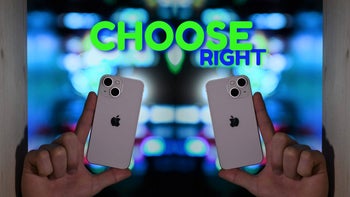
After putting together a list of the top overrated phone features that customers might fall for when buying a new device in 2022, I decided it's only fair to follow up with a more positive take on the same story.
So, today we're going through a list of those aspects of a phone that might go under the radar but can make all the difference when it comes to your immediate and long-term experience with your brand new device.
I'll tell you why zoom cameras are the best, why software updates are more important than having the most powerful processor, why your phone's charging speed can change your life, and how a smaller phone can help you deal with wrist pain.
Although it might seem like having a powerful processor with 12GB of RAM is enough for great performance, the truth is that hardware can only go that far. It's not a coincidence that big players like Apple and Samsung pay special attention to software updates, which help keep phones feeling fresh, fast, and just… usable over time.
As it stands, Apple is leading the pack with 5-6 years of software updates for new iPhones and Samsung is close second with 4 years of updates for the Galaxy S, Z, and some A series of phones. OnePlus and Xiaomi offer 3 years of software support, which is good, but definitely not ideal.
The big disappointment here comes with Google. Android's father/mother settles for just 3 years of software updates for the Pixel 6 series, like OnePlus and Xiaomi. This is strange since Google… makes Android.
While personally I expect Sundar Pichai & Co to extend software support for Pixel 6 once the Pixel 7 is released to match Samsung's 4 years of updates, there's no guarantee this will happen. But it definitely should...
Even budget and mid-range phones like the Galaxy A33 (3 years) and Galaxy A53 (4 years) now come with the promise of extended software support, so there's no excuse for Google. Also, there's no excuse for you not to choose a device that will last and stay fresh for as long as possible - they are affordable now!
Again… Although having a powerful Qualcomm or Apple chip is awesome, processors generate heat. And if heat isn't being dealt with accordingly, it can result in throttled performance, where your phone isn't making the most out of the horsepower on board.
A massively underrated feature, which iPhone users take for granted and probably don't appreciate enough, because they've never used a budget Android device.
Haptic feedback is the vibrations you feel when you interact with your phone. For example, typing, scrolling through menus, or simply getting notifications when vibration is enabled is all tied to haptics.
iPhones have reigned supreme in that regard forever now, but recently some Android flagship phones like the Pixel 6 Pro, Galaxy S22 Ultra, and Xiaomi 12 Pro have made significant progress, which is great to see. Some mid-range Xiaomi devices are also known for having great vibration motors.
Haptic feedback is simply another layer of interaction with your device, which you come to appreciate only once you've tried a phone with an excellent vibration motor. Just go in-store and test them all out to find out which feels best.
Another highly underrated feature of modern smartphones is true fast-charging.
If the only phone you've ever owned is an iPhone, a Galaxy or even a Pixel, you don't know what you're missing out on with devices from OnePlus and Xiaomi. And, yes... I know Samsung now offers "45W" charging with its Galaxy S22 phones, but as it turns out, charging speeds are severely limited, and the company's 45W charger doesn't actually charge your phone faster to 100%, compared to a 25W charger.
Anyway, being able to top up your device for 20 minutes in the morning and use it all day can be a true game-changer. Not to mention some phones like the Xiaomi 11T Pro and Redmi Note 11 Pro+, which take just 25 and 15 minutes for a full charge - yes, from 0 to 100%!
So, trust me - if you're choosing between two equally good devices, but one comes with noticeably faster charging, do yourself a favor and pick the one with faster charging. Especially if you're always on the go and always forget to charge your phone, or you're just a very heavy user who never ends the day on a single charge. It might change your life.
Sure, having a huge 5,000mAh battery helps some phones last longer unless. Well, unless this phone is a Google Pixel 6 Pro… If my Pixel has taught me one thing, it is that power management and optimization are much more important than having a high-capacity cell in your device.
Our tests have shown that the Galaxy S22 Ultra, which also comes with a 5,000 mAh battery, manages to get noticeably better endurance than the Pixel 6 Pro - about 20-25%.
And I know I sound like a broken record to those who come to PhoneArena often, but Apple's iPhone 13 Pro Max manages to dominate both of the above-mentioned Android flagships with a noticeably smaller battery, which cements the theory that software optimization is key. Apple's iOS scores a big win in this category for now.
Even I sometimes find myself in situations where I need to call for help, and Apple's basically immediate phone/chat support has been a godsend - whether I've had a question regarding my iPhone, iPad, Mac, or iCloud account, they've always been quick to respond.
So, today we're going through a list of those aspects of a phone that might go under the radar but can make all the difference when it comes to your immediate and long-term experience with your brand new device.
Because who else do you trust with medical advice? A doctor?! Don't be a fool.
The most underrated phone features in 2022: What to look for when buying a new iPhone or Android
Software support and optimization
Although it might seem like having a powerful processor with 12GB of RAM is enough for great performance, the truth is that hardware can only go that far. It's not a coincidence that big players like Apple and Samsung pay special attention to software updates, which help keep phones feeling fresh, fast, and just… usable over time.
At this point in time, I simply wouldn't consider or even recommend a phone that comes with less than 3 years of software support. It's 2022 and people keep their phones for longer, which means software support is more important than ever.
As it stands, Apple is leading the pack with 5-6 years of software updates for new iPhones and Samsung is close second with 4 years of updates for the Galaxy S, Z, and some A series of phones. OnePlus and Xiaomi offer 3 years of software support, which is good, but definitely not ideal.
Apple's software optimization on older devices reigns supreme. My almost five-year-old iPhone 8 has gotten slower over time, as any phone would, but it still runs fine without any significant lag or hiccups. It's also running on the same software as the iPhone 13 Pro, which is incredible.
The big disappointment here comes with Google. Android's father/mother settles for just 3 years of software updates for the Pixel 6 series, like OnePlus and Xiaomi. This is strange since Google… makes Android.
Even budget and mid-range phones like the Galaxy A33 (3 years) and Galaxy A53 (4 years) now come with the promise of extended software support, so there's no excuse for Google. Also, there's no excuse for you not to choose a device that will last and stay fresh for as long as possible - they are affordable now!
Heat management & RAM management for better sustained performance
Again… Although having a powerful Qualcomm or Apple chip is awesome, processors generate heat. And if heat isn't being dealt with accordingly, it can result in throttled performance, where your phone isn't making the most out of the horsepower on board.
Apple stands out when it comes to heat management, while some Qualcomm chips are prone to overheating, which is probably why some manufacturers like Samsung and Xiaomi have decided to "take matters into their own hands", and slow down certain apps and features before their flagship phones start overheating.
On the topic of RAM, while more is more and more is better, it doesn't mean all of that memory is utilized properly. iPhone and iOS tend to make the most out of the RAM available onboard.
On the topic of RAM, while more is more and more is better, it doesn't mean all of that memory is utilized properly. iPhone and iOS tend to make the most out of the RAM available onboard.
For example, I did a RAM test with my iPhone 8 (2GB RAM) and two Android phones with 12GB of RAM, and while I'll keep the whole story for another day, let's just say that the iPhone's performance surprised me. Like... it really surprised me!
If you're choosing between two Android devices, bear in mind that we've seen phones with 8GB of RAM outperform devices with 10 and 12GB, so read some reviews before assuming that more will be better.
Although you might think that a higher-megapixel camera will certainly take better photos than a lower megapixel one, or that having more cameras on board is always better, this simply isn't how phone cameras work.
So, if you're on the market for a new phone, make sure to check the sensor size of whichever device you've got your eye on. You can check camera sensor sizes on Phone Arena's specs comparison tool. Bigger camera sensors help with getting more natural bokeh in your shots as well as more light in challenging lighting conditions, which makes photos and videos better overall.
Another thing that's not to underestimate is that most of the camera differences between phones nowadays come in the form of post-processing. This means that even if the Galaxy S22, iPhone 13, and Pixel 6 come with identical camera sensors and take great photos, their sharpness, detail, and color tuning are what might set them apart, and therefore make one better than the rest.
As it stands, Samsung likes to overshapen its photos, which I don't like, but some of you might. For example, Apple's iPhone usually takes more realistic night photos than any other phone, but they aren't necessarily impressive. Then, Pixel 6 strikes a nice balance between the two, but it has a weaker ultra-wide-angle camera.
So, make sure you keep an eye on our camera comparisons so you're up to date with the best shooters in the business at all times.
Camera sensor size and style of photo/video post-processing
Although you might think that a higher-megapixel camera will certainly take better photos than a lower megapixel one, or that having more cameras on board is always better, this simply isn't how phone cameras work.
So, if you're on the market for a new phone, make sure to check the sensor size of whichever device you've got your eye on. You can check camera sensor sizes on Phone Arena's specs comparison tool. Bigger camera sensors help with getting more natural bokeh in your shots as well as more light in challenging lighting conditions, which makes photos and videos better overall.
Another thing that's not to underestimate is that most of the camera differences between phones nowadays come in the form of post-processing. This means that even if the Galaxy S22, iPhone 13, and Pixel 6 come with identical camera sensors and take great photos, their sharpness, detail, and color tuning are what might set them apart, and therefore make one better than the rest.
As it stands, Samsung likes to overshapen its photos, which I don't like, but some of you might. For example, Apple's iPhone usually takes more realistic night photos than any other phone, but they aren't necessarily impressive. Then, Pixel 6 strikes a nice balance between the two, but it has a weaker ultra-wide-angle camera.
Haptic feedback/vibration motor
A massively underrated feature, which iPhone users take for granted and probably don't appreciate enough, because they've never used a budget Android device.
Haptic feedback is the vibrations you feel when you interact with your phone. For example, typing, scrolling through menus, or simply getting notifications when vibration is enabled is all tied to haptics.
iPhones have reigned supreme in that regard forever now, but recently some Android flagship phones like the Pixel 6 Pro, Galaxy S22 Ultra, and Xiaomi 12 Pro have made significant progress, which is great to see. Some mid-range Xiaomi devices are also known for having great vibration motors.
Haptic feedback is simply another layer of interaction with your device, which you come to appreciate only once you've tried a phone with an excellent vibration motor. Just go in-store and test them all out to find out which feels best.
Did you know the iPhone SE 2022 doesn't have a real home button? It's just a glass surface that vibrates when you press it.
Fast charging (but not like Samsung's)
Another highly underrated feature of modern smartphones is true fast-charging.
If the only phone you've ever owned is an iPhone, a Galaxy or even a Pixel, you don't know what you're missing out on with devices from OnePlus and Xiaomi. And, yes... I know Samsung now offers "45W" charging with its Galaxy S22 phones, but as it turns out, charging speeds are severely limited, and the company's 45W charger doesn't actually charge your phone faster to 100%, compared to a 25W charger.
So, trust me - if you're choosing between two equally good devices, but one comes with noticeably faster charging, do yourself a favor and pick the one with faster charging. Especially if you're always on the go and always forget to charge your phone, or you're just a very heavy user who never ends the day on a single charge. It might change your life.
Better power management for better battery life
Sure, having a huge 5,000mAh battery helps some phones last longer unless. Well, unless this phone is a Google Pixel 6 Pro… If my Pixel has taught me one thing, it is that power management and optimization are much more important than having a high-capacity cell in your device.
Our tests have shown that the Galaxy S22 Ultra, which also comes with a 5,000 mAh battery, manages to get noticeably better endurance than the Pixel 6 Pro - about 20-25%.
And I know I sound like a broken record to those who come to PhoneArena often, but Apple's iPhone 13 Pro Max manages to dominate both of the above-mentioned Android flagships with a noticeably smaller battery, which cements the theory that software optimization is key. Apple's iOS scores a big win in this category for now.
Step it up, Android!
Firstly, phone weight perception will be subjective because it very much depends on the weight of the device you've been using up until the point you pick up a new device.
Phone weight (and size)
Firstly, phone weight perception will be subjective because it very much depends on the weight of the device you've been using up until the point you pick up a new device.
But nevertheless, holding a Galaxy S22 (167g) feels properly refreshing if you're coming from a Galaxy S21 Ultra (227g), iPhone 13 Pro Max (240g), or, God forbid, a Galaxy Z Fold 3 (271g).
I know a 60-80 grams difference might not feel like much on paper, and this is true if we're talking about a laptop or even a big tablet. However, with phones, every gram matters. OK, not literally, but you get the point...
Especially when the difference is as massive as 60-100 grams, you might find that the lighter device isn't just a joy to use, but it might also help alleviate any wrist pain you might've been feeling from holding a huge, heavy phone all day.
I know a 60-80 grams difference might not feel like much on paper, and this is true if we're talking about a laptop or even a big tablet. However, with phones, every gram matters. OK, not literally, but you get the point...
Especially when the difference is as massive as 60-100 grams, you might find that the lighter device isn't just a joy to use, but it might also help alleviate any wrist pain you might've been feeling from holding a huge, heavy phone all day.
On the contrary, if/when you pick up a heavy phone after a month of using a light device, you'd never be able to fathom how people use "these bricks".
My colleagues here at PhoneArena have written many stories about why speaker quality on phones matters. Unless it doesn't for you, of course - if you wear earbuds all the time.
A good pair of stereo speakers won't only eliminate the need for an external Bluetooth device when listening to music or podcasts at home. It can also make media consumption that much more enjoyable.
You might not realize it because it blends in and becomes one with the visuals, but sound is a huge part of movies and even certain types of YouTube content, and it is definitely the secret to a good production too. It's not a coincidence that many of the successful YouTube stars out there pay special attention to sound. There's no reason you shouldn't.
Sound/speaker quality
My colleagues here at PhoneArena have written many stories about why speaker quality on phones matters. Unless it doesn't for you, of course - if you wear earbuds all the time.
A good pair of stereo speakers won't only eliminate the need for an external Bluetooth device when listening to music or podcasts at home. It can also make media consumption that much more enjoyable.
You might not realize it because it blends in and becomes one with the visuals, but sound is a huge part of movies and even certain types of YouTube content, and it is definitely the secret to a good production too. It's not a coincidence that many of the successful YouTube stars out there pay special attention to sound. There's no reason you shouldn't.
Take a look at our picks for phones with the best speakers out there, where Rado will tell you more.
I've already written a love letter to the Pixel 6 Pro's amazing 4x periscope telephoto lens, but let me reiterate…
Whether it offers 3x, 4x, or 5x zoom, a great telephoto camera can forever change the way you take photos with your phone, especially if you're already a phone-photography enthusiast.
The tight focal length makes for some super-intimate portraits of people and things, which look miles better than if taken with a standard wide-angle camera. But a good tele lens also completely changes the perspective when exercising street or animal photography - that's where the sheer zooming element comes into play.
Apart from the Pixel 6 Pro, which, in my view, comes with the single best telephoto camera on the market, some of the best phones for this purpose are the Galaxy S22 Ultra, Galaxy S21 Ultra, Xiaomi Mi 11 Ultra, and iPhone 13 Pro and Max.
In fact, I love my telephoto lens so much that I believe it should be the second camera on budget phones, too, instead of the ultra-wide-angle shooters, which find a place in basically every phone nowadays.
More often than not, you can back up a few steps to get a wider perspective of whatever you're taking a photo of - especially if you're outside, but you can't climb a skyscraper or a tree to get a close-up shot of whatever's caught your eye. Unless you're Spider-man or the guy who cleans tall building windows. I salute you if you are.
Last but certainly not least, post-purchase customer service matters. I know we tend to think of phones as "what you see is what you get" products, but this is far from the truth.
A telephoto camera for optical zoom and portrait photography
I've already written a love letter to the Pixel 6 Pro's amazing 4x periscope telephoto lens, but let me reiterate…
Whether it offers 3x, 4x, or 5x zoom, a great telephoto camera can forever change the way you take photos with your phone, especially if you're already a phone-photography enthusiast.
The tight focal length makes for some super-intimate portraits of people and things, which look miles better than if taken with a standard wide-angle camera. But a good tele lens also completely changes the perspective when exercising street or animal photography - that's where the sheer zooming element comes into play.
Apart from the Pixel 6 Pro, which, in my view, comes with the single best telephoto camera on the market, some of the best phones for this purpose are the Galaxy S22 Ultra, Galaxy S21 Ultra, Xiaomi Mi 11 Ultra, and iPhone 13 Pro and Max.
In fact, I love my telephoto lens so much that I believe it should be the second camera on budget phones, too, instead of the ultra-wide-angle shooters, which find a place in basically every phone nowadays.
More often than not, you can back up a few steps to get a wider perspective of whatever you're taking a photo of - especially if you're outside, but you can't climb a skyscraper or a tree to get a close-up shot of whatever's caught your eye. Unless you're Spider-man or the guy who cleans tall building windows. I salute you if you are.
After-sale service
Last but certainly not least, post-purchase customer service matters. I know we tend to think of phones as "what you see is what you get" products, but this is far from the truth.
I'm not saying buy an iPhone, but what I'm saying is - at least make sure the phone-maker you've chosen has active customer support in your region. It's like having a tech-savvy friend who you can always call in case you need help.









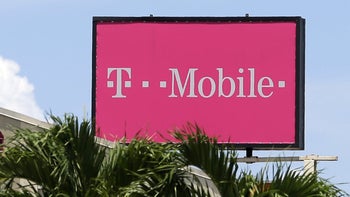
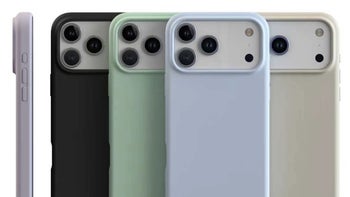
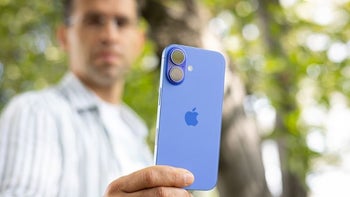
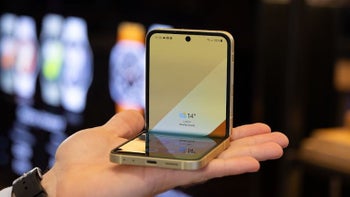
Things that are NOT allowed: